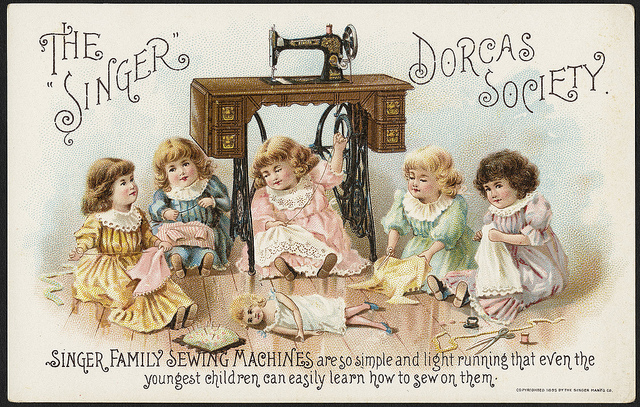As always, I continue to be amazed how little I know about sewing. I’ve been doing this for over ten years, and I still am learning new things with every new project. I truly believe the only reason that sewing isn’t valued as a skill is because it’s classed as “women’s work.”
Mitering corners with ribbon. I used the video below to teach myself how to miter corners with ribbon. This is the treatment around the neckline of Ianthe’s underdress.
How to make a cloak. Believe it or not, I had never made a cloak before. For Reasons, it was important that it be a circle. I used this full circle cloak tutorial.
How to work with velvet(een). As my cloak was made of velveteen, I needed to learn how to work with fabric with pile and a nap. This article on Sewing with Velveteen helped. The main thing I learned? Don’t apply the iron directly to it, but steam from a short distance from the non-plush side, over another plush surface, like a towel.
More about full bust adjustments (FBAs). I had originally read how to do an FBA on Sewaholic and knew the basic theory, as well as when one should use an FBA. (I am the perfect candidate for one, as I am generally small-framed with a large-ish bust). Unfortunately I found the Sewaholic tutorial didn’t work for my particular case (I forget why — did it have darts?), but I found some other ones that did:
- The Beginner’s Guide: Full Bust Adjustment
- How to Make a FBA (Full Bust Adjustment). I did not do step 14, to remove excess width at the waistline, as I generally need to add width for my waist too.
Narrow shoulder adjustment. This is an adjustment I did not do, and now I really wish I did. Having made a few of the Simplicity costume patterns, I must conclude that whoever the size 20 fit model is, she must have impressive shoulders. The next iteration of this dress that I make, I will take guidance from these articles:
- Narrow Shoulder Adjustment. I just need to follow Curvy Sewing Collective, don’t I?
- Wide or Narrow Shoulder Adjustment
The joys of Fray-Check. Not really much to say here, except that Fray-Check (or other seam treatments) is something I vaguely knew existed but had never used until this project. There were a lot of seams that I couldn’t hide with binding or double up material without adding unwanted bulk in this project. So I bought some Fray-Check, and holy hell is it awesome. How have I done without it before?
Iron-on studs. Another thing I knew existed but had not worked with before. They are basically bits of metal with a reservoir of something like hot glue in the base. You apply heat for 15 seconds to each side, and they’re on! No idea how well it will hold up in the dryer, tho. (I generally Dryel most of my larp garments).
Using large washers as pattern weights. I’ve dithered on buying pattern weights before, but keep not doing it because I find something wrong about spending money on unitaskers. However! The aforementioned Curvy Sewing Collective FBA tutorial uses plain ol’ hardware washers as pattern weights, and, as it turns out, pattern weights are essential to doing adjustments that pivot the pattern.
